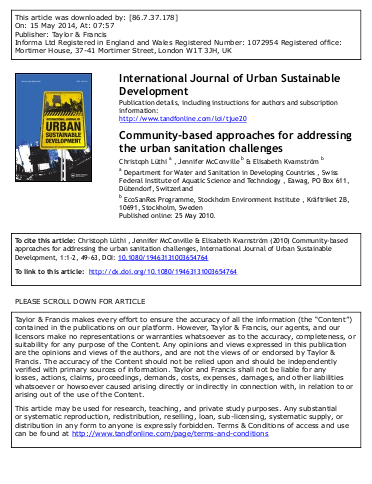
Urban sanitation presents one of the most significant service delivery challenges related to poverty alleviation and sustainable development in the developing world. The past decade has witnessed innovations in service delivery approaches for unserved rural and urban settlements with a clear policy shift to community-based approaches that attempt to overcome the supply-led, over-engineered sanitation solutions of the past decades. This article presents two examples of new developments: the urban-focussed household-centred environmental sanitation (HCES) and the rural-focussed community- led total sanitation (CLTS) approaches. The internationally renowned CLTS approach has achieved considerable success since its introduction, by harnessing community and small private sector capacity to solve sanitation problems locally. Experience with validation of the HCES approach in a variety of urban sites in Africa, Asia and Latin America is presented in the second part of the article highlighting some of the lessons learned. The article closes by arguing that a combination of HCES and CLTS, two field-tested methodologies, has the potential to improve the sustainability of sanitation service interventions.
Keywords: urban basic services; infrastructure planning; environmental sanitation; household-centred approach; community-led total sanitation.
Resource collections
- Climate emergency
- Locally led humanitarian action
- Topics
- UN Habitat - Urban Response Collection
- Urban Response - Urban Crisis Preparedness and Risk Reduction
- Urban Response Collection - Community Engagement and Social Cohesion
- Urban Response Collection - Economic Recovery
- Urban Response Collection - Environment and Climate Change
- Urban Response Collection - Housing, Land and Property
- Urban Response Collection - Urban Crisis Response, Recovery and Reconstruction
- Urban Response Collection - Urban Resilience
